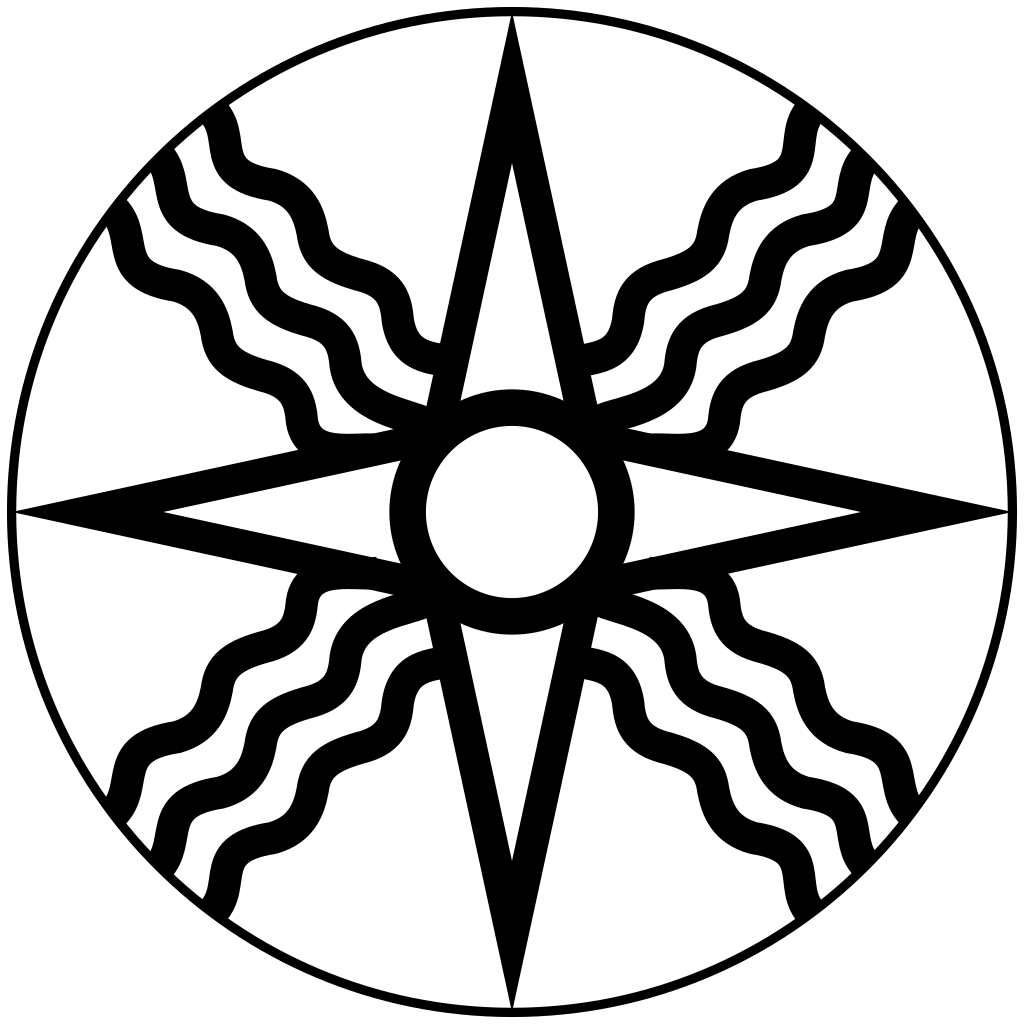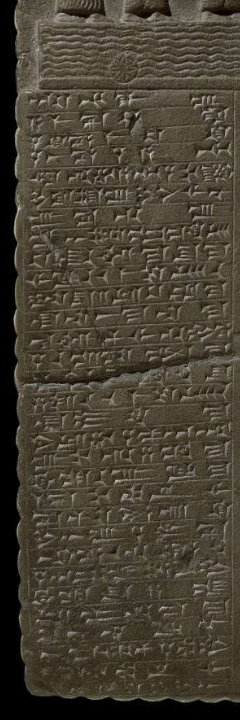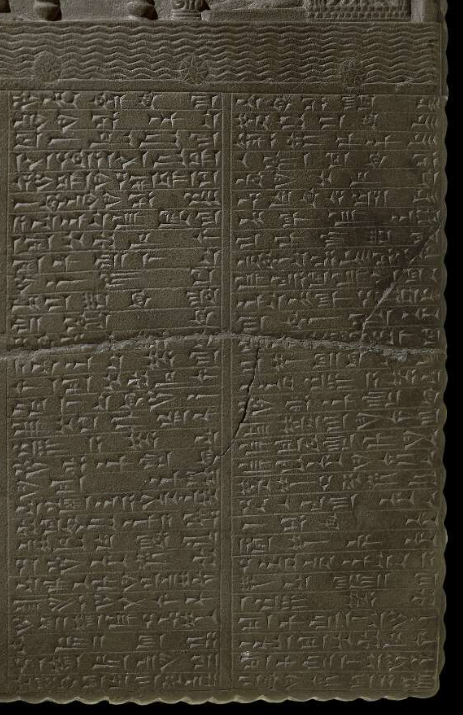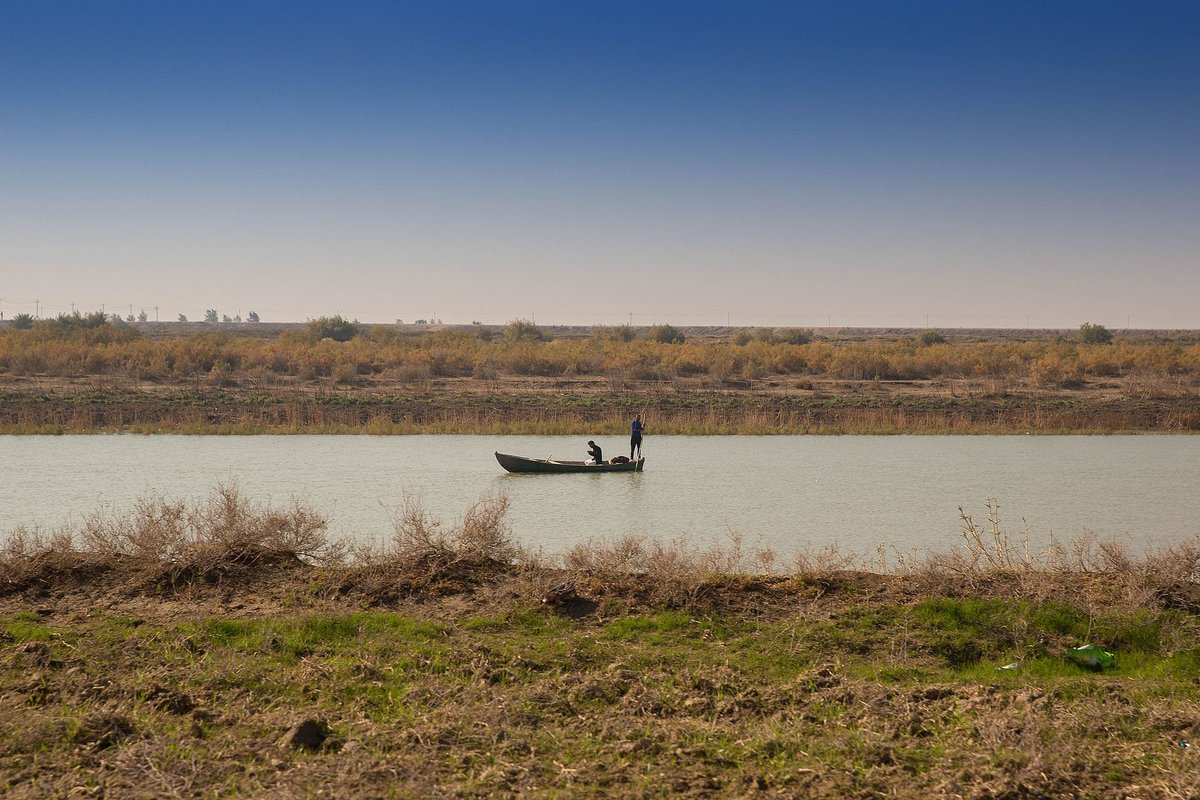A couple weeks ago, @3d_historian approached me with a great research question: what are the colors for the iconographic sun disk of Shamash?
A fun, introductory thread on the Sun God of Mesopotamia:
A fun, introductory thread on the Sun God of Mesopotamia:
First, who is Shamash / Utu?
The study of Mesopotamian religion isn& #39;t a very well theorized or agreed upon field of study, but there are some essential characteristics that we can discuss without needing 600 pages worth of details; essentially, they are the Sun.
The study of Mesopotamian religion isn& #39;t a very well theorized or agreed upon field of study, but there are some essential characteristics that we can discuss without needing 600 pages worth of details; essentially, they are the Sun.
The name of Shamash appears in cuneiform as 𒀭𒌓. The first sign is a marker of divinity (called & #39;dingir& #39;) and the second sign is called UD, which stands for & #39;day& #39;, the Sun, the quality of brightness, the act of shining, so on and so forth.
Shamash, much like the Hellenistic deity Apollo, takes on a prominent role in divination, which I hope to make a thread about in the near future. The story goes that Shamash, after spending the day in the sky, descends into the netherworld, where fates are decided.
Shamash& #39;s famous iconography is called the sun disk. In Akkadian this is called either the šamšatu or niphum. When discussed with regard to jewelry or accoutrement, we see the former used; the latter can be seen an important cuneiform document, the Sun God Tablet.
This tablet is made out of rock (rather than clay!) and impressively incised. The text unfolds a story of the worship of Shamash in his home city of Sippar. Sometime during the mid-1000s BCE, Shamash& #39;s temple is attacked and defiled. His presence and symbols go missing.
Shortly thereafter, King Simbar-šipak tries to install Shamash in the temple but isn& #39;t given divine favor. In lieu of this, he tethers a sun disk before the god. Ritual offerings are reinstated, but halt just years afterward due to famine.
Fast-forward two centuries and the "wicked enemy" that desecrated the temple is vanquished by King Nabû-apla-iddina. The Sun God commissions the king to make a new statue for the god as a just reward for being a hero, so to speak.
An old image of him is found on the western bank of the Euphrates and the King goes to work. The statue of the god is made with red gold (iv. 18: ina kug-gi ru-uš-ši-i) and shining lapis lazuli (iv 19: za.gin3 eb-bi).
We have the names of the craftsmen who worked on this god, too: Nin-ildu, Kuggi-banda, Nin-kurra, and Nin-zadim. The image is brought into E-karzaginna (House of the lapis quay) on the bank of the Euphrates in Ea’s temple at Babylon. His mouth is washed as an act of purification.
In celebration, King Nabû-apla-iddina sacrifices mighty bulls and fine, fattened sheep. He gussies up the temple’s doors with honey and wine and scented flour. In addition to a plethora of foods, colored wool is offered to Shamash, namely tabarrû (red) and takiltu (blue-purple).
In later archives from Shamash’s temple, we learn Shamash& #39;s clothes use about 20 mina of white wool with about half a mina more of blue-purple wool. His muttatu headdress is unique to him (in these archives) and it is made of red and blue-purple wool twined with byssos threads.
When we look at literary works, he is described as having a lapis-lazuli beard. When he is praised, he is called “the red crown of the heavens” (agû ruššû ša šamê) as well as “the lord of all the springs, the bond of the seas.” Almost always, he is described as shining (UD).
From this we get some colors: white (clothing, temple name, epithets), red (clothing, iconography, statue material, šu’illa prayers), lapis blue (statue material, hymn) and blue-purple (clothing). More commonly, he is referred to through the qualities of light: bright, brilliant.
In this way, I think his colors reflected the brilliance of the Sun. There was probably liberal use of white with complements of red and orange, possibly yellow. Lastly, there may have been highlights of blue which may have reflected shadows of a sunrise / sunset.
It is worth noting that the Sun God Tablet was used as direct inspiration for the Assyrian Flag, which uses orange, light blue, dark blue, and red on a white background. While the figure noted is Ashur, the symbol in the center is none other than our sun disk, the niphum.
That& #39;s it everyone! Obviously I can& #39;t fit everything we know about Shamash into one thread, so if you would like to share your favorite things about the god or have any questions, don& #39;t hesitate to engage with this thread.
Main pockets of information come from:
Main pockets of information come from:
Woods, Christopher. 2004. The Sun-God Tablet of Nabû-apla-iddina Revisited. Pages 23-103 in Journal of Cuneiform Studies 56.
Zawadzki, Stefan. 2006. Garments of the Gods, Studies on the Textile Industry and the Pantheon of Sippar according to the Texts form the Ebabbar Archive.
Zawadzki, Stefan. 2006. Garments of the Gods, Studies on the Textile Industry and the Pantheon of Sippar according to the Texts form the Ebabbar Archive.

 Read on Twitter
Read on Twitter










